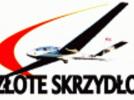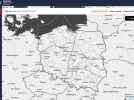Thomas Cook B752 at Newcastle on Aug 17th 2013, flaps overspeed, fuel imbalance, landed below final fuel reserve
A Thomas Cook Boeing 757-200, registration G-TCBC performing flight MT-6107 from Fuerteventura,CI (Spain) to Newcastle,EN (UK) with 235 passengers and 7 crew, was on an ILS approach to Newcastle's runway 23. The captain (56, ATPL, 13,374 hours total, 1,380 on type), pilot flying, overshot the extended runway center line during localizer intercept but managed to capture to localizer and glideslope with a revised intercept heading, however, the commander was unsettled thinking the aircraft had not performed normally. ATIS had included a pilot report advising of a windshear at 500 feet losing 15 knots of air speed, the runway was wet. After the preceding aircraft had landed that crew advised of a possible bird strike which prompted the tower controller to instruct MT-6107 to go around. At this time the gear was down, flaps had been extended to 20 degrees, the aircraft was descending through 1500 feet MSL (about 1200 feet AGL) 3.8nm before the runway threshold, the captain applied maximum thrust and disconnected autothrottle, but did not disconnect the autopilot which continued to track the localizer and glideslope. As result the aircraft accelerated reaching 187 KIAS at which point the captain, without notifying the first officer, disconnected the autopilot but not the flight director, which continued to indicate LOC and GS tracking, and began to pitch the aircraft up. The pitch was set to 10 degrees nose up, the aircraft still accelerated however. The gear was retracted, the captain called for Vref+80 and climb thrust, the first officer was unable to set the speed into the MCP, the aircraft reached 195 KIAS, 18 knots above the Flap 20 limiting speed before the flaps began to retract. In an attempt to level off at 3500 feet as instructed by ATC the commander ignored the flight director indications, the aircraft accelerated and reached 287 KIAS before the thrust levers were placed from TOGA into idle position, the flaps and slats were still extended. Although the Flaps 1 limiting speed was 240 KIAS the trailing edge flaps did retract, the leading edge slats however remained partially extended and a "LE slat disagree" message appeared on the EICAS. The autopilot disengaged a short time after being engaged a number of times, only 6 minutes after the go-around the autopilot was successfully re-activated. The aircraft had already joined a downwind but had deviated 500 feet below assigned altitude. ATC was informed of a slight technical problem, the captain decided to extend the downwind while the checklists were worked to deal with the leading edge slat indication. The crew established they had 3600kg of fuel remainig. The crew attempted to select flaps 1, the "LE slat disagree" disappeared however a "TE Flap disagree" message appeared, while working the related checklist the captain commanded flaps 5, which didn't succeed, the captain queried that this were all flaps they have got and annotated they needed a longer runway. The crew established they needed 2000 kg of fuel to Manchester and decided to divert to Manchester immediately. The aircraft climbed to FL100, the flaps were retracted, the alternate flap selector, set to 5 degrees, was forgotten however causing the flaps to remain partially extended. A forward fuel pump low pressure light illuminated but was not taken care of. Although cleared to FL100 the QNH setting remained on local QNH 999 instead of standard pressure with the aircraft 400 feet above assigned level. The captain instructed the first officer to declare Mayday for a flapless landing at Manchester, which was carried out (ATC initially understanding a medical emergency). A minute later a "low fuel" and "fuel config" indication illuminated, the first officer requested a priority landing because of low fuel. The alternate flap lever was turned off, which resulted in the disagree indications being cleared, the flaps reached their 1 degree position on normal procedure, the crew concluded they had normal flap operation again and retracted the flaps to conserve fuel. 15 minutes after the "low fuel" indication occurred the crew made the first reference to the indication, the captain detected that they should use the left hand fuel tanks. After completing communication with ATC to fetch weather data the first officer opened the cross feed valve and turned the right hand fuel pumps off, however, without reference to the quick reference handbook. One minute later the descent towards Manchester commenced, 10nm before touchdown the right hand fuel pumps were turned on again and the fuel cross feed was opened, the captain commented they were committed to land and could not do a go-around, the flaps were extended to and reached 30 degrees and the aircraft touched down normally and safely on Manchester's runway. The left hand fuel tank held 700kg of fuel, the right hand tank 200kg of fuel at shut down.
The AAIB released their bulletin concluding the causes of the serious incident were:
This serious incident had its origin in an incorrectly executed G/A from well above decision altitude. The approach briefing had not mentioned the techniques that might be employed in such a circumstance. Initially the autothrottle disconnect switch was operated rather than the G/A switch and the thrust levers were advanced manually. In order to climb, the autopilot was disconnected but the flight director remained in approach mode and did not provide the pilots with appropriate guidance.
SOPs were not adhered to and consequently the pilots’ situational awareness became degraded and their workload was increased. As a result there was a slat/flap overspeed which necessitated the use of the QRH to address a non-normal situation. The pilots became stressed and task-saturated and were unable to follow the checklists correctly in order to regain full use of the slats and flaps and then land at their destination.
When a decision was made to divert, it was accepted that the fuel in tanks would drop below the final reserve level before landing. However, fuel caution messages were overlooked because a low fuel state was seen as an integral part of the solution to the earlier difficulties.
The low and imbalanced fuel state which developed could have had serious implications in the event of a further G/A.
The outcome could have been improved by greater adherence to SOPs along with better monitoring and workload management skills. One tool that was overlooked and which could have helped with decision making in these unfamiliar circumstances was the mnemonic TDODAR.
The AAIB reported that after landing the captain added entries to report the difficulty to set the MCP speed, LE slat disagree and TE flap disagree messages. During his journey home it occurred to the captain that he had not reported the flap overspeed event and he phoned maintenance, the tech log entry was enhanced. Subsequent readout of the flight data recorder confirmed the flap 1 limiting speed had been exceeded by 46 knots and the AAIB was informed.
The AAIB reported concerning the captain: "The commander had been flying the Boeing 757 (B757) for about two and a half years before this incident. Prior to that he had operated Airbus types for over 13 years, but he was now at a stage where he “felt comfortable” with the B757." and further on stated: "He sensed that the airline was in turmoil due to a major internal re-organisation programme. The direct effect for him was that he had been told that he would be one of several captains who would be demoted to first officer in March 2014 and that his salary would reduce significantly. He was unhappy about this impending change and the matter weighed heavily on his mind at work, despite his best efforts to ignore it."
The captain reported: "He remembered that he called “go-around”, but did not state “flaps 20” and that he advanced the thrust levers. He knew that he needed to do something with his thumb, but instead of pressing the G/A switch, he said he must have disconnected the A/T."
The AAIB computed that the aircraft would have needed a minimum landing distance of 1455 meters for a flaps up landing. Adding the operators standard safety margin in case of a technical emergency of 15% this required a landing distance available of 1685 meters with Newcastle's runway offering 2,125 meters landing distance.
With respect to fuel the AAIB computed: "At FUE the aircraft was fuelled to 20,000 kg. The Pilots’ Flight Log (PLOG) showed that this was 295 kg in excess of the minimum required. The taxi fuel was predicted as 306 kg, with a trip fuel of 15,650 kg, a contingency allowance of 469 kg and a final reserve figure of 1,627 kg. The PLOG indicated that to divert to EDI, 3,280 kg of fuel would be needed to land with final reserve fuel. MAN was listed as the second alternate option with a minimum of 3,626 kg required, including a predicted burn of 1,999 kg. The PLOG gave a cruise level of FL170 from NCL to MAN and a track distance of 132 nm. The quoted burn presumed a clean configuration and a normal speed profile."
http://avherald.com/h?article=47b86849














Komentarze